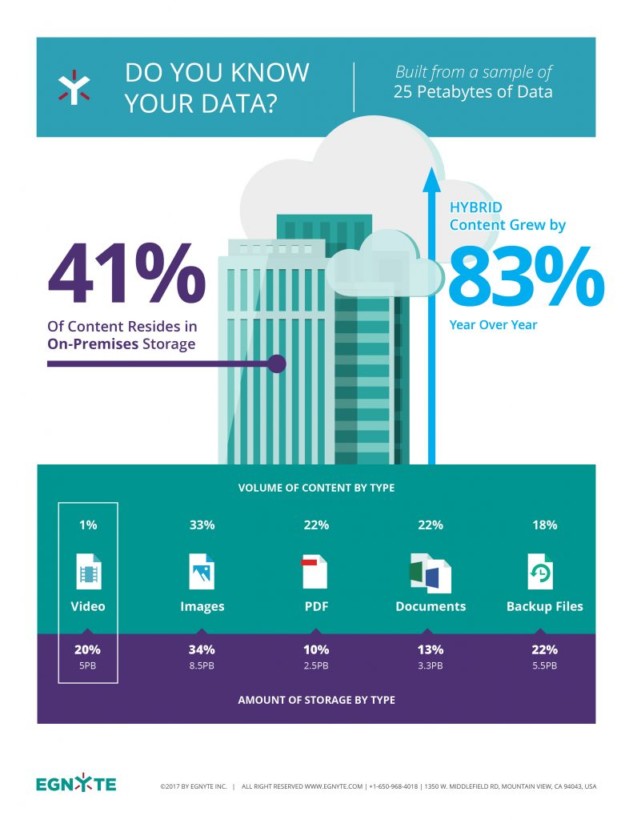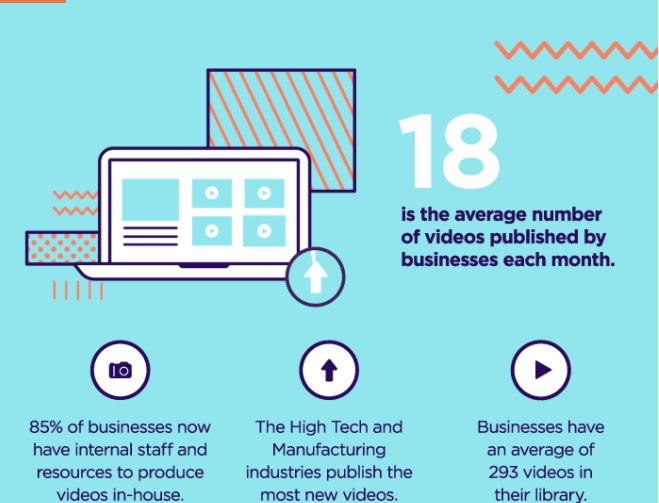
Look, data is everything. We could argue the merits of many different factors that affect business decisions and your your business model, but at the end of the day data tells the true story about what is going on. It doesn’t discriminate, it doesn’t care about your personal feelings, it just is.
The point of that soapbox stand above is that when a company that focuses on data (or has mass amounts available) releases a study or infographic that compiles their data into something easily digestible, it’s never a bad idea to take five minutes to look it over and see what knowledge can be gleaned. Take two of the studies discussed below by Egnyte and HubSpot, for example, where they break down data storage methods and how video is changing the way we consume information – both at home and in the office. What might seem like a boring, maybe even unnecessary, study on the surface actually can give valuable insights into storage expenses, preferred devices (which can increase views), and a multitude of other factors.


Ok, let’s take this bit of information for example. While there will always be merits to having some of your storage on-premise, it is still surprising to see that 41% is still in-house. One would imagine this number would continue to go down as years pass, but why is that number still so high? Is it because of technological hurdles? Maybe an uninformed management team? Sadly, the graph can’t answer that, but it shows that there is still places for improvement and the next savvy entrepreneur might be able to figure out a solution for this, that can benefit their idea and the storage solutions of companies of all sizes.
Then, there’s the more practical information in this segment – video only accounts for 1% of content, but 20% of storage. That is astounding, especially considering that HubSpot estimates that 80% of web traffic will be driven by video by 2019. Storage and optimization of video will continue to take a bigger priority in the years to come, and these numbers from the infographic really help put that into perspective.

Taken from the HubSpot infographic, this helps put into perspective the number of videos being pushed out by businesses. That number alone is startling to me, but I would imagine it is larger companies mainly, with some outliers. As mentioned above, by 2019 it is estimated that 80% of traffic will be driven by video, so, will this number go up? Is there a saturation point? If that point is much higher, companies will need to start looking at more realistic ways to store their large video files.
There is also the marketing factor to take into account, especially with the HubSpot infographic. (Egnyte discusses usage of devices in their study, as well, but it is more of a look into operating systems which doesn’t have as much effect with this piece). Business related videos are viewed 86% of the time on desktop, whereas time spent on social media is done predominately on mobile (80%). So, you can use this information to better understand your target audience and where you should put your focus into advertising for your video marketing.
And that helps bring it back full circle. Data. By looking at these two studies we can see that it might not be as simple as just “Let’s create more video content,” because while it might drive traffic, it is sitting there taking up valuable (and sometimes expensive) space. Add to the fact that we’re quickly able to correlate business views in relation to business devices used and we can start making better decisions when we start our next marketing campaign – all because of data and the companies that compile it.
Get the TNW newsletter
Get the most important tech news in your inbox each week.




